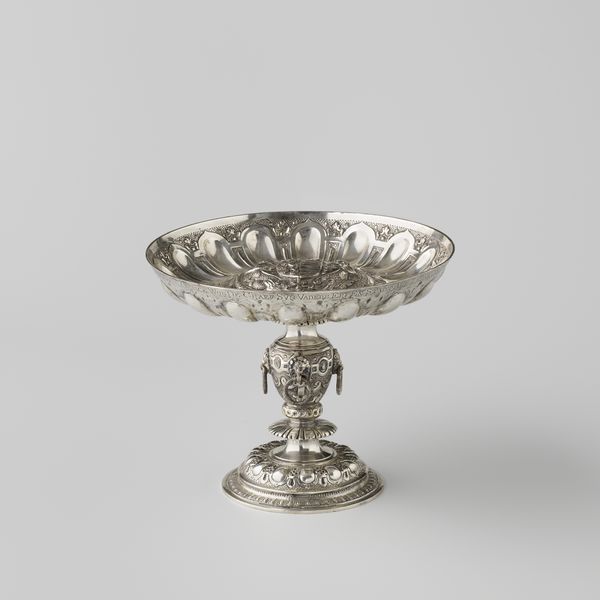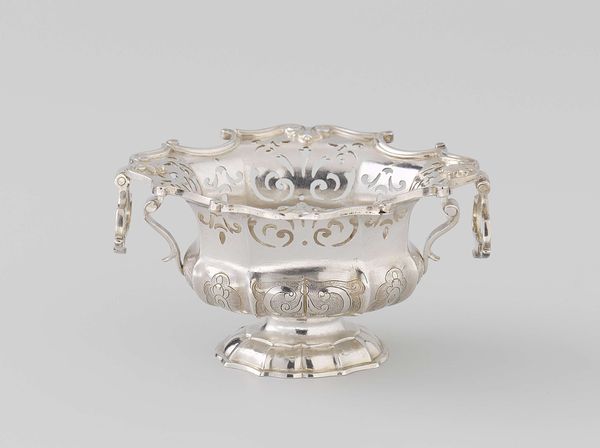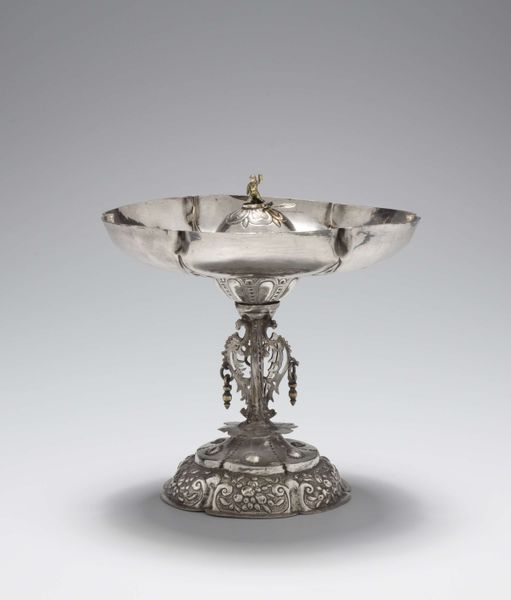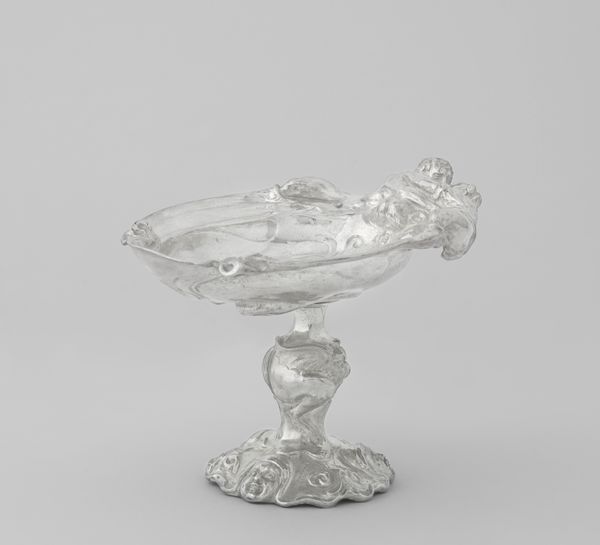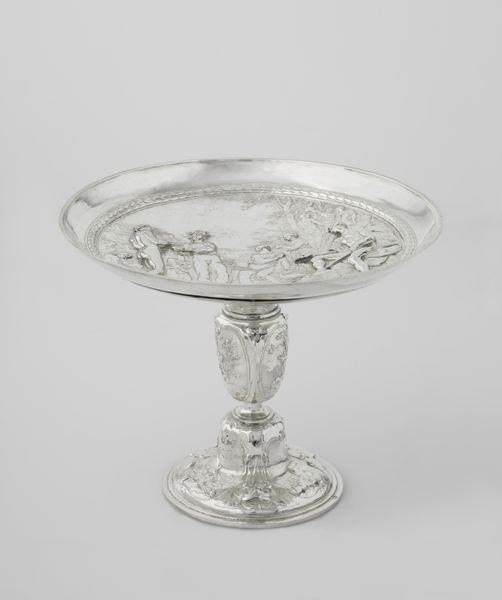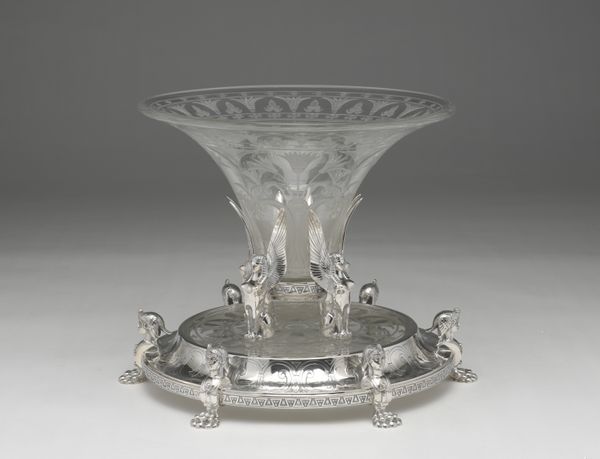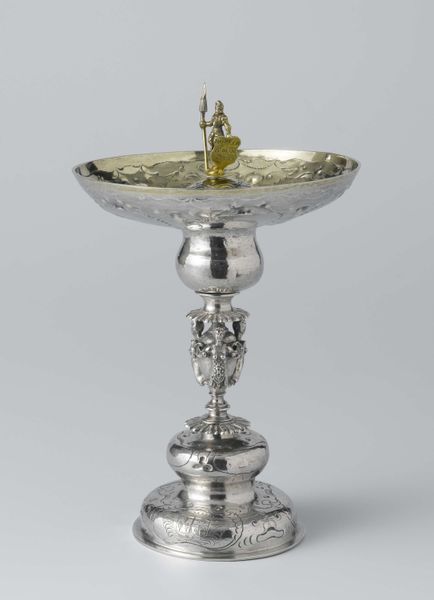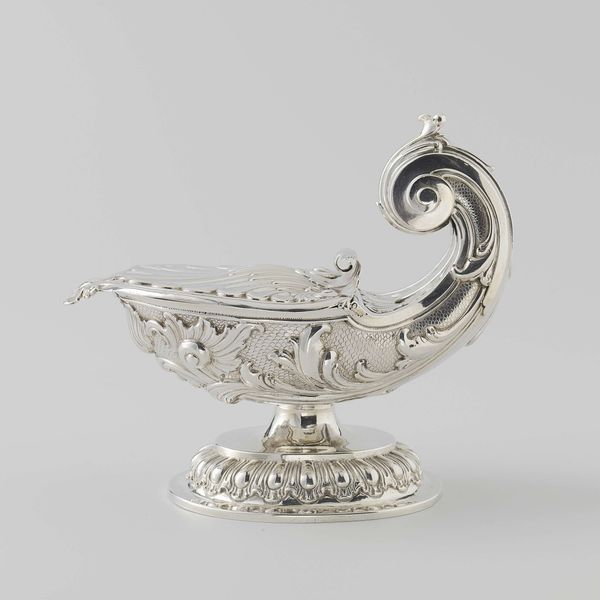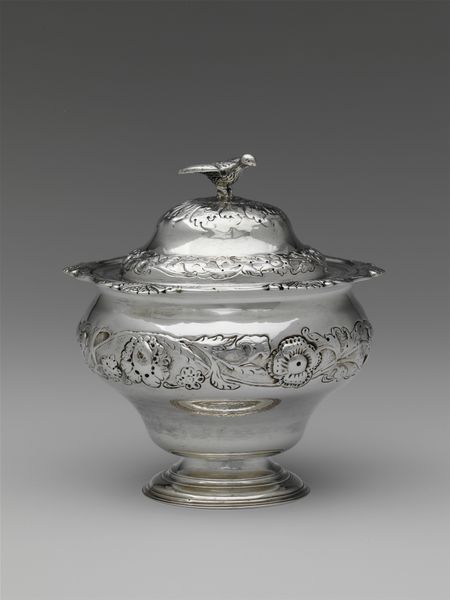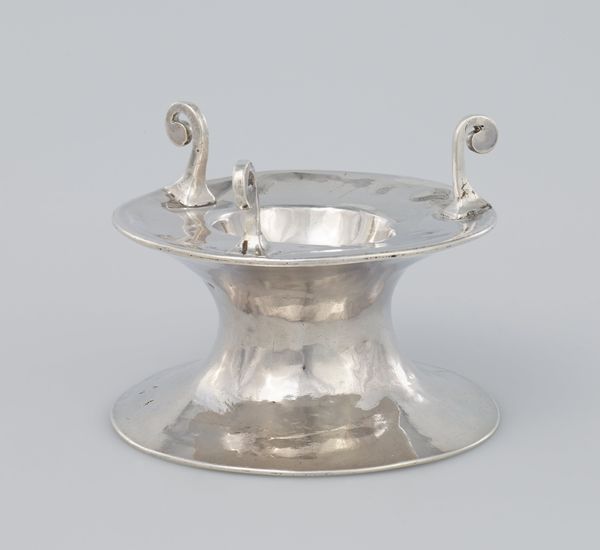
silver, metal, sculpture
#
silver
#
baroque
#
metal
#
figuration
#
sculpture
#
decorative-art
Dimensions: height 15.6 cm, length 17.8 cm, width 13.9 cm
Copyright: Rijks Museum: Open Domain
Editor: Here we have Adam van Vianen’s silver Tazza from 1621, currently housed at the Rijksmuseum. The intricate details and cherubic figures give it a uniquely playful feel, although the material makes it look rather formal. How do you interpret its function, given its aesthetic qualities and historical context? Curator: It's fascinating how Vianen blends the sacred with the functional, isn’t it? Think about the patronage system in the 17th century. An object like this, made of precious silver, speaks volumes about the patron's wealth and refined taste. More than just a drinking cup, this Tazza performs status. The religious motifs reflect values of the time. Does that symbolism sit easily with the idea of it being for something as mundane as drinking? Editor: Not really! I guess it highlights the way that even everyday objects could be vehicles for conveying symbolic meaning and demonstrating social standing. It makes you think about how art and power intersect. Curator: Exactly. Objects like these often ended up in Kunstkammern, cabinets of curiosities, functioning more as conversation pieces and status symbols than functional items. The Baroque style, with its ornate details, further emphasizes its display value over pure utility. So what does that tension between art and utility tell you? Editor: I suppose it reveals how art wasn't always meant to be confined to galleries, it also played a vital role in social rituals and asserting influence. I hadn't considered it that way before. Curator: Precisely. Understanding that interplay deepens our appreciation. This object highlights the politics embedded within artistic creation. I think that our improved appreciation also enhances our own understanding of contemporary practices.
Comments
rijksmuseum about 2 years ago
⋮
Four mythological gods recline on the rim of this dish: Venus, the goddess of love, with her son Cupid; Bacchus, the god of wine; and Ceres, the goddess of agriculture. Together they personify the maxim: ‘Without food and drink, love is cold’. This object was masterfully fashioned from a single sheet of silver. The proud silversmith signed it on the front.
Join the conversation
Join millions of artists and users on Artera today and experience the ultimate creative platform.

